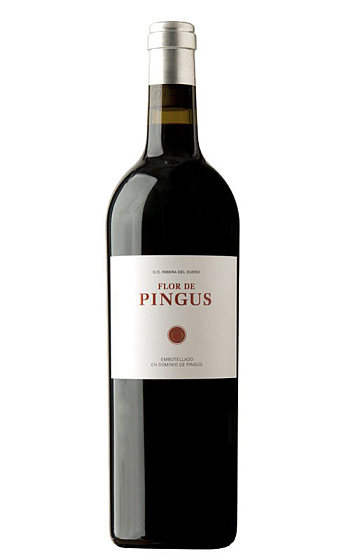Flor de Pingus 2017
Descripción
La última añada de Flor de Pingus, la 2017, repite alta valoraciones, como ya es costumbre, destacando los 93 puntos concedidos por The Wine Advocate. Las particulares condiciones climáticas del año, aquejado de importantes heladas, mermaron la cosecha en un 40% y la distinguieron con una gran concentración y mucho tanino. En todo caso, la calidad de este tinto es espectacular y personifica la excelencia dentro de la D.O. Ribera del Duero.
Ficha técnica
Cata
Viñedo y elaboración
Opinión de los críticos
Because of very low yields and a warm and dry season, the 2017 Flor de Pingus was produced from very concentrated grapes with lots of tannin, so they had to do a very soft vinification and an extended élevage, being very careful not to dry out the wine. So, they used less new oak barrels, and the wine was alternatively in barrique and stainless steel, trying to polish the tannins and keep the juiciness and avoid excessive tannins. So, the wine is polished, more than it usually is. It's ripe but without the perfect ripeness of a great vintage. It has character, in a somehow more baroque way. Peter Sisseck compared it to other vintages finished in seven: 1997, 2007. They only produced some 60,000 bottles, when the normal production should have been around 100,000 bottles, which means they lost some 40% of the crop because of the frost. It was bottled in July 2019, later than in other vintages.
A chunky and pretty young wine with blueberries and blackberries and chocolate. Chewy tannins that are polished and fresh. Full-bodied. Round and sexy. Shows lots of potential.
Pingus' second wine is sourced from 23 parcels covering 25.5 hectares in La Horra, with most of the grapes sourced from the bodega's own vineyards. Floral, subtle and refined, even at 15% alcohol, Flor has the red fruit flavours, silky, caressing tannins and beautifully judged oak usage that are typical of Peter Sisseck's style. If you can't afford the Gran Vino, this gives you some idea of what the fuss is about. 2022-29
This is a surprising second wine (with 6% Cabernet and 4% Merlot), not very closely related to the top Pingus, since it is oakier, very concentrated, juicy, fruity. It keeps an air of family identity with its depth and complexity. Excitingly intense, with a kind of aesthetic quality revealing the most expressive Ribera style. A most convivial experience, to be considered on its own rather than in reference to Pingus. 14 months’ oak.









Añadas: 2022 2021 2020 2017
Esta añada no tiene valoraciones todavía. Pincha en las otras añadas para ver sus valoraciones.
Caro para lo que es, no repetiría.